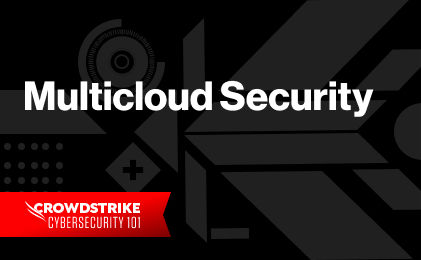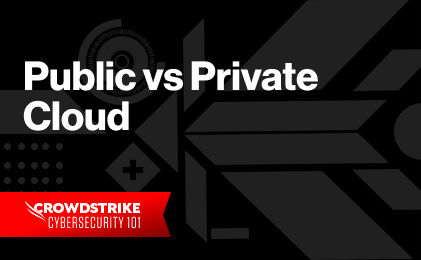Master CNAPPs for Superior Cloud Security
Master CNAPPs for Superior Cloud Security
What Is Multi-Cloud?
Multi-cloud is when an organization leverages multiple public cloud services. These commonly consist of compute and storage solutions, but there are numerous options from various platforms to build your infrastructure.
Implementing multi-cloud lets you avoid vendor lock-in, which reduces the risk of downtime and data loss caused by a single point of failure. It also lets you take advantage of the unique features and benefits of different cloud providers. For example, you might use Microsoft Azure for its machine learning capabilities and AWS to test other processor technologies. Or, you can deploy your critical infrastructure across two cloud providers as no cloud vendor is infallible.
Achieving a balance across clouds will allow you to reap the benefits of each, and can be accomplished through an active setup or by designating one as primary and the second as a hot standby.
Multi-Cloud vs Hybrid Cloud
Some people refer to a hybrid cloud as a form of multi-cloud or multi-cloud as a subset of a hybrid cloud. In fact, though similar, they are two very distinct strategies.
A hybrid cloud is composed of services from diverse types of cloud, for example, combining on-premises and public cloud, private and public cloud, on-premises and private cloud, or even all three.
A multi-cloud is a collection of services from different cloud provider catalogs, but all must be a single cloud type: public.
There are continuous discussions about whether using different software-as-a-service (SaaS) providers is a multi-cloud solution. For instance, does keeping your Microsoft 365 and Google calendars in sync constitute a multi-cloud solution?

The Complete Guide to CNAPPs
Download CrowdStrike's Complete Guide to CNAPPs to understand why Cloud-Native Application Protection Platforms are a critical component of modern cloud security strategies and how to best integrate them to development lifecycles.
Download Now6 Benefits of Multi-Cloud
Multi-cloud offers numerous advantages over a single public cloud provider, including availability, choice, agility, budget, competition, and mindset. Let's look at these in more detail.
1. Availability
The most obvious reason why organizations choose to put their eggs in more than one basket is that, occasionally, one basket gets dropped. For example, we’ve all read stories about a major cloud provider suffering a network configuration error, which can disrupt all availability zones within a region or even a continent. So, using a second provider as part of a multi-cloud solution makes sense if you need to restrict your deployment geographically.
2. Choice
Less obvious is the best-fit philosophy. Most companies limit themselves to the services their chosen cloud platform offers to build their solutions. Instead, why not select the best-of-breed components from various providers to design and assemble your ideal infrastructure?
3. Agility
With multi-cloud, you can rapidly move your services between cloud providers in reaction to new or improved technologies. For example, let's say an artificial intelligence (AI) service is part of your software stack, and performance has been OK. But then, another cloud vendor releases a new AI technology that would substantially improve your customers’ experience. In a multi-cloud environment, you can migrate your AI service to that better technology without redeploying your entire stack.
4. Budget
Cost can be a significant driver of multi-cloud adoption. Selecting each must-have service from diverse vendors allows you to shop around for the most budget-friendly options for your system.
5. Competition
Your customers could demand features your current provider either doesn't have or won't have for some time. Do you add the service from another cloud by adopting a multi-cloud approach or risk your customer going elsewhere?
6. Mindset
Finally, and rarely mentioned in discussions on multi-cloud, is mindset. Designing multi-cloud infrastructure creates an awareness — and thus avoidance — of vendor-specific configurations that can lock you into a single service. This results in a more agile system design where elements of software stacks are easily moved between public clouds.
Key Considerations for Managing Multi-Cloud
Using multiple services from different public cloud providers can bring complexity. A multi-cloud strategy requires careful planning and coordination to ensure the security of your data and applications, as well as a seamless integration between different cloud platforms.
You first need to learn about each provider's services, how to configure and deploy them, and what tools they’ve developed to help you manage those services.
Coordinating security measures across multiple cloud platforms can appear pretty overwhelming, but it doesn't have to be. Below are some key factors to take into account when managing a multi-cloud environment:
Choose the Right Tools and Technologies
There are a variety of tools and technologies available to help manage a multi-cloud infrastructure, including cloud management platforms, cloud orchestration tools, and cloud automation tools. Choosing the right solutions to automate tasks, monitor performance, and ensure security across the entire system is vital. Integration is key. Consider well-integrated and consolidated tools, like CrowdStrike Falcon® Cloud Security, that enable organizations to manage, automate and have visibility across the entire multi-cloud environment.
Establish Governance and Security Policies
Managing multi-cloud requires establishing governance and security policies to make sure data and applications are secure and compliant across all platforms. This includes implementing access controls, monitoring for security threats, and ensuring data privacy and compliance with regulatory requirements.
Implement Automation and DevOps
Automation and DevOps practices can help streamline the management of a multi-cloud environment by automating routine tasks, such as provisioning resources, monitoring performance, and scaling resources up or down as needed. This can help reduce the risk of errors and boost efficiency.
Monitor Performance and Costs
It’s important to keep an eye on the performance and associated spend of all platforms and services in a multi-cloud. This includes tracking resource usage, analyzing performance metrics, and optimizing costs by making sure you’re using the most efficient cloud service for each workload.
How CrowdStrike Can Help
Multi-cloud has become popular with developers because it allows developers to leverage multiple cloud providers, which can provide them with greater flexibility, resilience, and cost-effectiveness.
Each cloud environment has its own set of securities, processes and tools, which can create security gaps in multi-cloud environments. Falcon Cloud Security delivers unified visibility and breach protection for multi-cloud. It delivers greater visibility, compliance and the industry’s fastest threat detection and response.
Gain a better understanding of how CrowdStrike can protect your multi-cloud. Get a demo for free today.







